How to Get Rid of Foxtails in Your Yard
Weeds that look like grass are a challenge for gardeners.
They compete with your plants for water, nutrients, and light, affecting their growth.
And because they blend into your lawn at first, it's easy to miss the problem until they're well established. Making it harder to get rid of them.
So to help you with early identification, I've prepared this list of the 8 most common grass-like weeds. And I'll give you suggestions for how you can prevent and get rid of them.
Let's dive in.
8 Common Weeds That Look Like Grass
Crabgrass
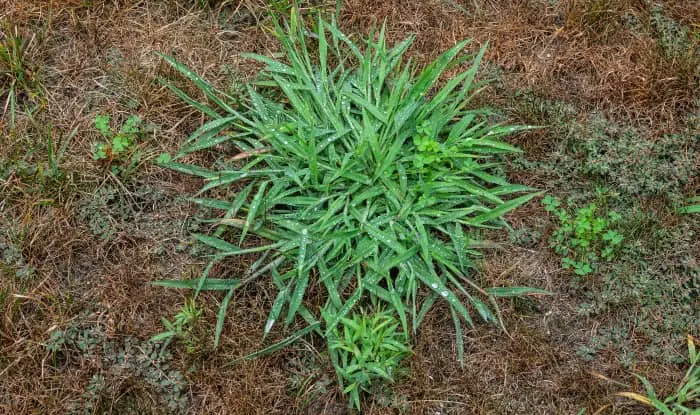
Crabgrass (also called finger grasses) looks like grass and is difficult to control
Crabgrass is an invasive weed that looks similar to grass. Only, unlike the rest of your lawn, its coarse texture, thick blades, and lateral growth cause it to stand out and look unsightly.
It's a common annual weed that germinates, grows, and dies within the space of a year. But what it does during that year can have long-term consequences for your lawn.
Crabgrass plants produce up to 150,000 seeds. And when they die, these seeds are left behind ready to germinate in spring the following year. Leading to a weed infestation.
Like many other types of weeds, if you leave crabgrass to grow it will crowd out and smother your lawn grass as it takes over.
And mowing won't help you get rid of the problem, as they can set seed even when they're only ½ inch tall. Which is lower than the recommended height for mowing lawn grass.
In order to control crabgrass, the best method is to prevent the seeds from germinating. So it's a good idea to use a pre-emergent herbicide in early spring.
Post-emergent herbicides kill the crabgrass that's already growing. But if they've already set seed, the problem will return next year.
You can also pull the plants out by hand. But depending on the size of the problem, this can be a lot of work.
Common Couch
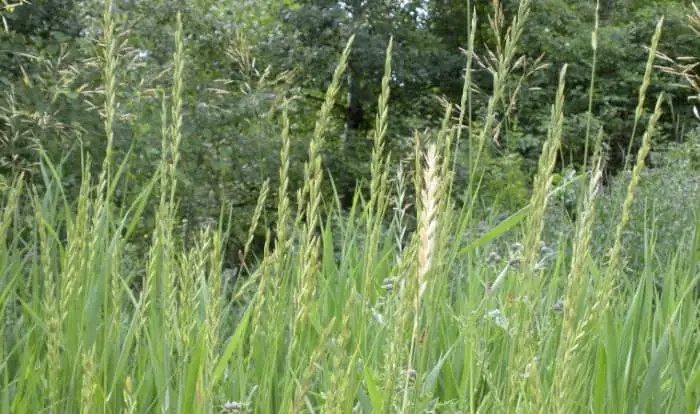
Quackgrass by Matt Lavin from Bozeman, Montana, USA, CC BY-SA 2.0
Also known as quackgrass, this invasive weed spreads quickly across your lawn due to prolific underground rhizome growth.
But it also reproduces from seeds, which disperse through the air and germinate in thin lawns further away.
It's easy to identify:
Firstly, it's a tall grass that quickly develops large patches.
And secondly, the leaves are broader than most lawn grasses and feel rough when you run your fingers across them.
Having a thick and healthy lawn is a good first defense to stop it from becoming established.
If you see it growing in your garden you can try to dig it out. But it can be difficult.
The roots break easily. And you have to make sure you don't leave them behind or the weed will grow back.
You can get rid of quackgrass using weed killer. But most selective weed killers don't work. And using a non-selective weed killer will also damage your lawn unless you're very careful.
Green Foxtail
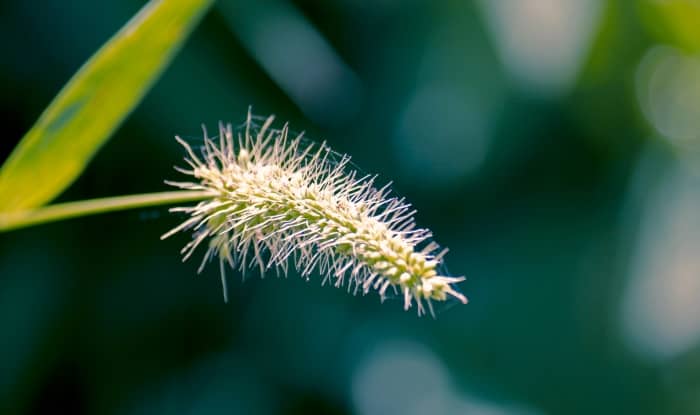
Green foxtail bristles
Also known as wild millet, green bristlegrass, and pigongrass, green foxtail has distinctive green 'foxtails' of seeds that resemble bristles on the end of its grass-like stalks.
It grows tall, anywhere from 10cm to 100cm. And it's common to see in meadows and prairies.
Green foxtail is an invasive weed species. And each foxtail contains hundreds of seeds that spread easily through the air. The plant can quickly become problematic in an area.
Making sure your lawn is thick and lush to prevent green foxtail from establishing itself. Weed control is rarely necessary for healthy lawns that are well cared for.
If you find it growing on your lawn, consider using a selective herbicide that kills green foxtail while leaving your grass unharmed.
Nutsedge
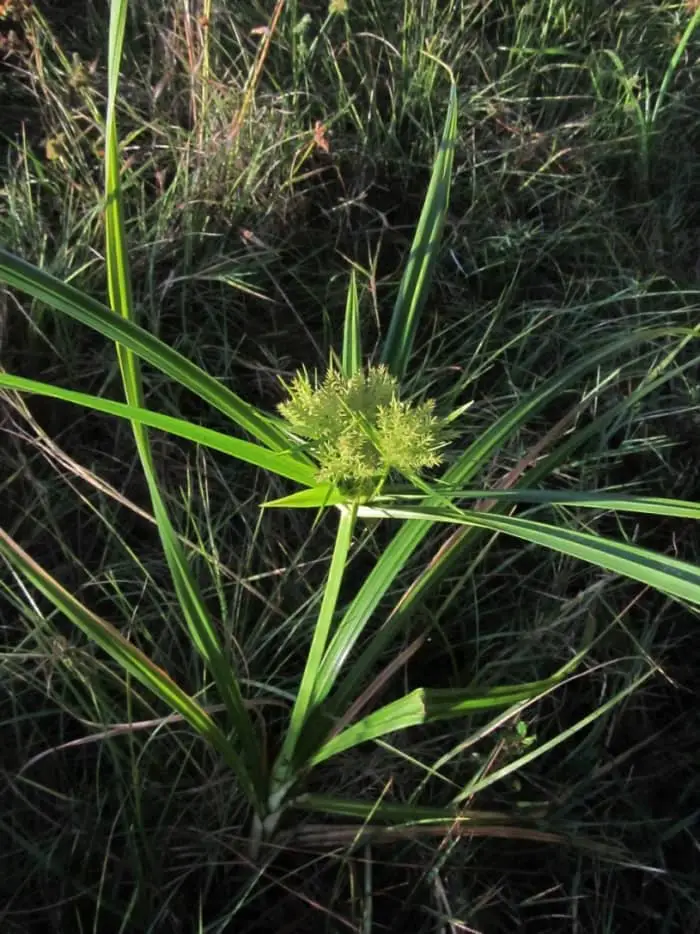
Yellow nutsedge weeds look similar to grass by Homer Edward Price, CC BY 2.0
Before it blooms, nutsedge resembles tall grass. But there are some distinctive differences when you look closely
To start with, nutsedges are V-shaped. And they're usually thicker and stiffer. With leaves in a set of 3, rather than the set of 2 commonly seen on grass.
Yellow nutsedge produces golden-yellow flowers and seeds. With purple nutsedge producing red-brown flowers when they bloom, and dark brown or black seeds.
It's a perennial weed that spreads by seed, underground rhizomes, bulbs, and tubers. With each tuber having the capacity to create hundreds of shoots in a 3-6 ft. area. As well as forming 100+ new tubers.
This makes it very hard to control. The key is to stop it from establishing itself, as once it does, it's difficult to get rid of.
Make sure you remove young plants before they've had a chance to develop the tubers.
If you find mature nutsedge plants already established in your garden, then pulling them out is unlikely to work. If you leave the rhizomes and tubers behind they will continue to sprout.
Instead, get a herbicide that targets nutsedge and can kill everything above and below the ground.
A more organic strategy is to grow a dense lawn that can crowd it out. Preventing it from being able to successfully root.
Nutsedge often thrives in waterlogged soil. So eliminating the wet conditions that help it to grow is a good idea.
Related: How To Get Rid Of Nutsedge In The Garden
Slender Rush
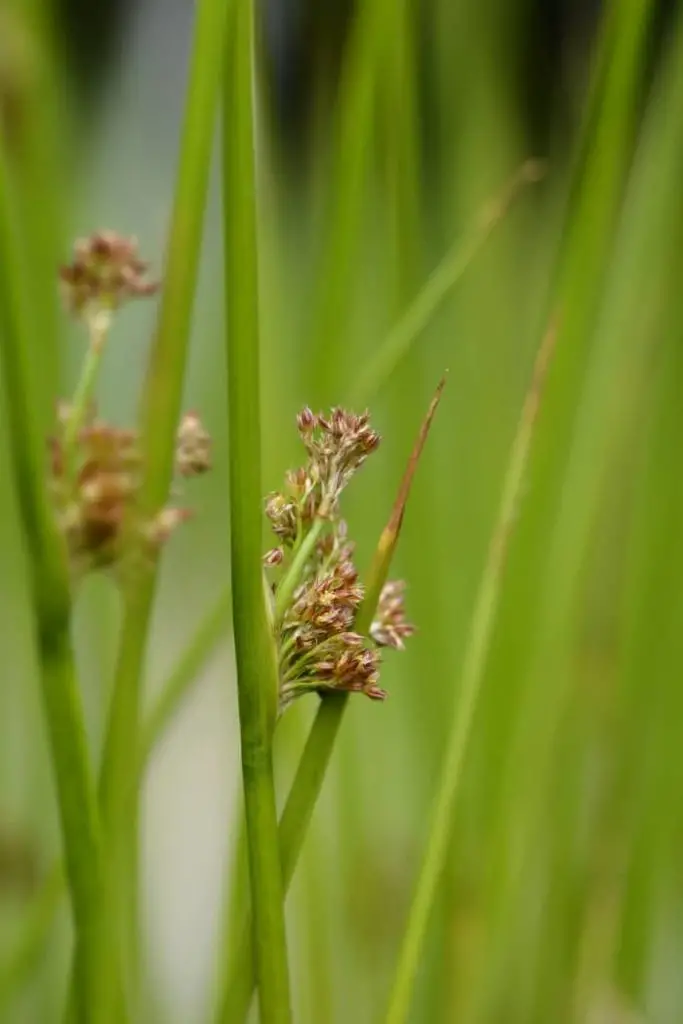
Slender rush growing in clumps
Also called field rush, poverty rush, and path rush, this perennial weed is usually visible in clumps.
It has grass-like leaves that grow from the lower part of its wiry, dark green stems. And grows somewhere between 15-60 cm tall.
It reproduces by seeds that are held in small, brown, egg-shaped pods at the end of the stems. And also develops rhizomes under the ground.
The best method for getting rid of small populations of slender rush is pulling by hand. Just make sure you remove the roots as well.
Glyphosate-based weed killers can help you control it. But you'll have to carefully spot treat the weeds in your yard because glyphosate will kill grasses and nearby plants as well.
Smooth Bromegrass
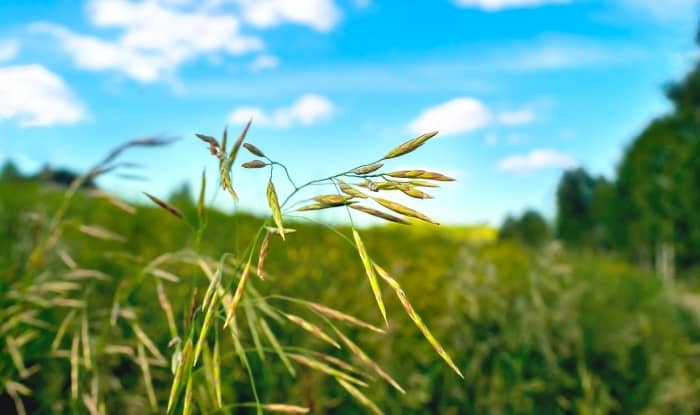
Smooth bromegrass weed
Smooth Bromegrass is a highly adaptable perennial weed that can grow even in the cold conditions of winter. But can also resist heat and drought.
It particularly thrives in deep, moist, and well-drained soils. Developing a large root system, and forming sod.
The plant grows between 15-30 inches tall and produces many leaf blades that look like grass. The leaves have flat and smooth blades with rough margins. And have a distinctive W or M constriction about ⅔ rds of the way up.
It's quite popular with farmers, who plant it deliberately because of its usefulness as hay, silage, and pasture. As well as its ability to prevent soil erosion.
But if you find it in your garden, that might not be much use to you. And it spreads rapidly through seeds and rhizomes. Quickly taking over thin lawns.
The plant recovers poorly from cutting. So keeping it mowed close to the ground can help to control it. And growing a thick lawn can crowd it out.
Post-emergent weed killers that contain glyphosate, such as Roundup, can kill the plant all the way to its roots and stop its spread.
Tall Fescue
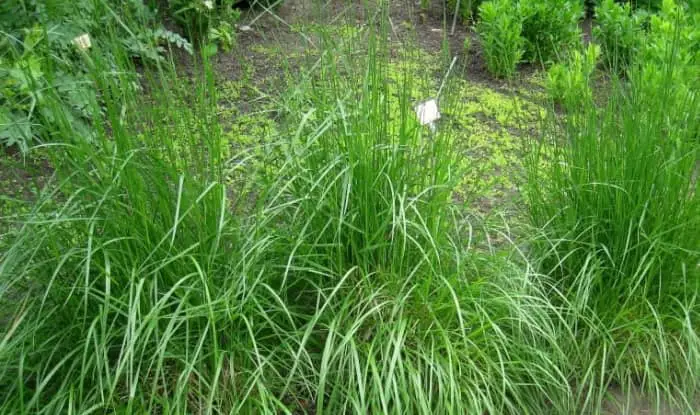
Tall fescue grass grows faster and taller than most lawn grasses, by Daderot, Public domain, via Wikimedia Commons
Tall fescue is a species of grass that's popular with some homeowners because it's well-suited to Northern lawns.
But, it's also an invasive perennial weed on lawns that consist of a different turfgrass.
It stands out because it grows faster than the surrounding grass and in clumps. With a height of somewhere between 6-20 cm. The stiff, broad leaves have rough margins and edges, and are up to 1 cm in width.
Once tall fescue is established, the thick root mass is extremely difficult to pull out by hand. And leaving any of the roots behind allows the plant to regrow.
Non-selective herbicides, such as glyphosate, will kill tall fescue. But you have to be careful when spot treating, as it will also kill any other plants you spray it on.
Wild Garlic & Wild Onion
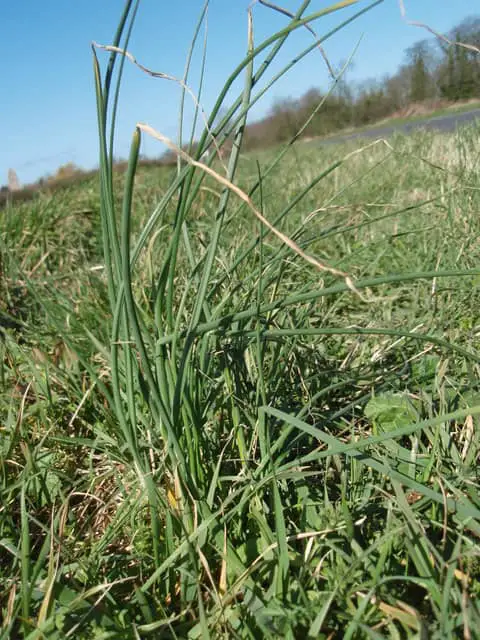
Wild onion looking similar to grass, by Michael Trolove / Wild Onion / CC BY-SA 2.0
These common lawn weeds closely resemble tall grass. But it's easy to tell the difference when you get close to them because of the smell.
Both wild onion and wild garlic have a strong fragrance that immediately makes them stand out. And this is particularly noticeable after you've mowed them.
They're also very fast growing. So they quickly rise above the height of the grass on your lawn. And unlike most grasses, they appear in clumps.
Look out for them growing in early spring and late fall. They're dormant in the summer.
They're easy to get rid of, you can dig them up with a spade. Make sure you remove the bulb from the ground or they'll grow back again.
You can also use 3-way broadleaf herbicides that contain 2,4-D, mecoprop, and dicamba. Such as Ortho Weed B Gon for lawns, and Southern Ag lawn weed killer.
These are safe to use on most lawn grasses. But always check the instructions to make sure it's okay for your turfgrass. In particular, some types of St. Augustine grass, and bermuda grass can be harmed.
Eliminating Weeds That Look Like Grass
The best way to prevent weeds that resemble grasses from becoming a problem is to deal with them early before they become established and spread.
You can often manage to control them without the use of chemical herbicides. But it's very important to remove them before they seed.
Some weeds produce thousands of seeds per plant. If you allow these to disperse around your garden, it won't matter if you kill all the weeds you find this year. Why?
Because they can lie dormant in the soil until the next growing season and the problem will return with a vengeance.
So here are the best lawn care tips to keep the weeds away:
Don't wait to weed. Keep an eye on what's growing in your garden each day and take care of the job while the grassy weeds are still young. It's usually easier to dig or pull weeds from the ground when the soil is moist after the rain rather than when it's dry.
Make sure to clean your tools when moving from one part of your garden to another. This stops weed seeds from being transferred around your garden. It also stops the spread of harmful fungi and bacteria.
Mowing your lawn regularly can stop weeds from developing to the point where they produce seeds.
When buying mulch, compost, manure, soil, etc, from garden centers, make sure it's weed-free.
Apply a layer of mulch around plants in your vegetable garden and flower beds. It can prevent weed seeds from landing on the soil and germinating. It's also effective at blocking sunlight for those already in the soil.
Directly water your plants rather than covering your whole garden. This helps to limit the amount of water that weeds receive.
When cultivating your lawn, make sure you don't over-fertilize because it will increase weed growth. But also, don't under-fertilize and end up with a thin lawn that's susceptible to weed invasion.
Using a good weed trimmer can make it a lot easier to cut down weeds in difficult to reach places in garden beds, and tight spots.
Perennial weeds require extra care. When digging them out of the ground, the best advice is to make sure you get all of the taproot to stop them regrowing. Be careful that pieces don't break off when pulling them out.
How to Get Rid of Foxtails in Your Yard
Source: https://gardeningvibe.com/weeds-that-look-like-grass/